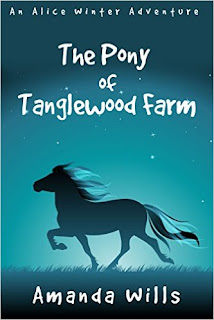A few reviews: Amanda Wills, Tudor Robins and Katherine Roberts

It’s been a while since I did a review. A long while, in fact, so to start this particular horse off again, here are some short reviews of some short ebooks. *** Amanda Wills – The Pony of Tanglewood Farm Kindle: £0.99 This is aimed at a younger age than the author’s previous books (I’d say 7+ – reasonably confident readers). It’s a lovely read: tightly plotted, with good strong characters and authentic pony action. Heroine Alice had an accident when she was little, and ended up with a large scar on her face. It is, she thinks, the first and only thing anyone sees when they look at her, and she’s spent her life since (she’s nine) pushing people away. Alice spends most of her time at next door Tanglewood Farm, a rescue centre for animals. Julia, the owner, never takes ponies, but she makes an exception for Star, and Alice helps him get better. At school things have improved too, with new girl Susanna becoming a friend. The problem is that all the animals at the rescue centr...